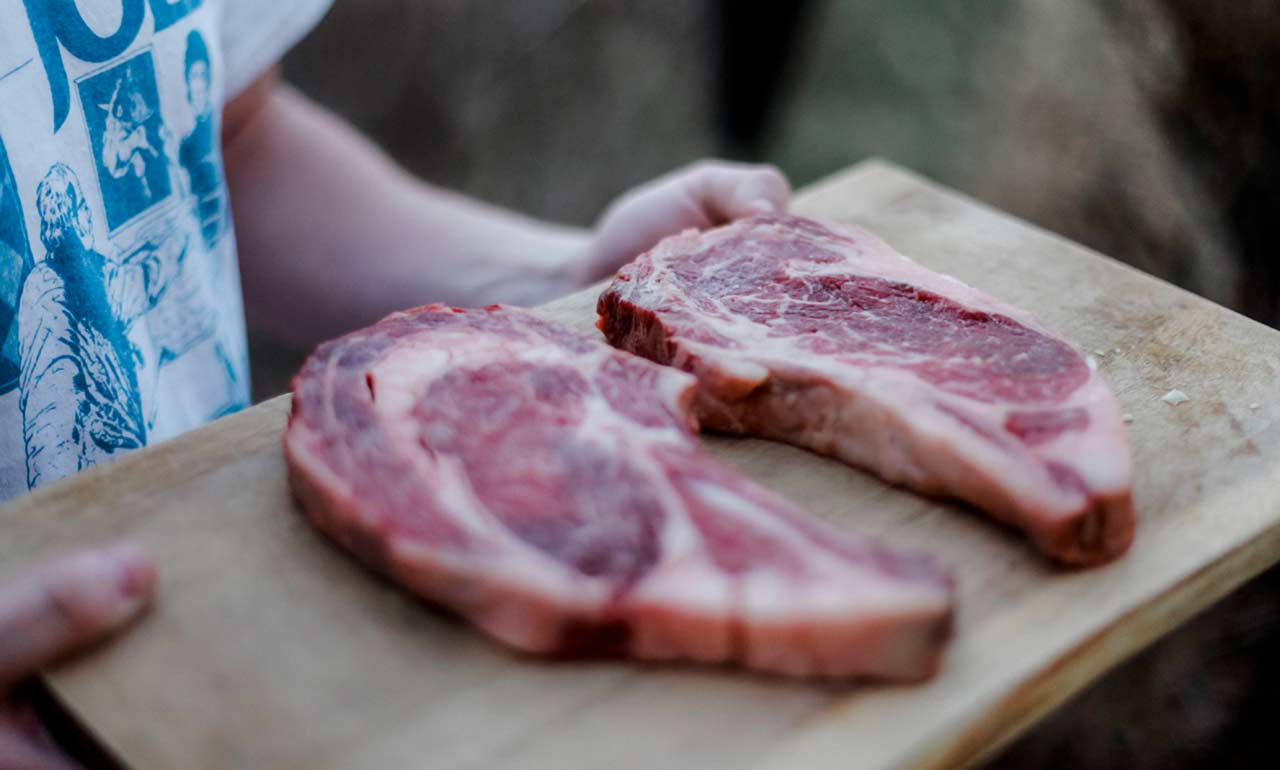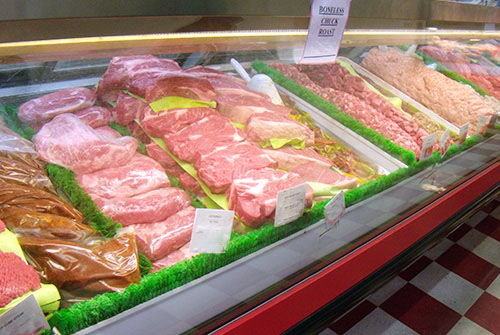Discover Fresh Cuts at Bagley Farms Meat Market Edwardsville IL for Your Following BBQ
Discover Fresh Cuts at Bagley Farms Meat Market Edwardsville IL for Your Following BBQ
Blog Article
Uncover the Art of the Butcher's Cut in a Modern Meat Market
In the ever-evolving landscape of modern meat markets, the butcher's cut has transcended its typical origins, merging old-time workmanship with contemporary practices. Today's butchers are not simply cpus of meat; they are well-informed craftsmens who emphasize sustainability and moral sourcing. Their competence in selecting and preparing cuts customized to specific cooking demands provides an unmatched dining experience. What absolutely sets the modern-day butcher apart is their capability to build a deeper link in between customers and the origins of their meat. Exactly how do these masters balance custom with development, and what implications does this have for the future of meat usage?
Advancement of Butchery Strategies
The development of butchery strategies mirrors a rich tapestry of technology and adjustment driven by developments in modern technology, adjustments in customer need, and a much deeper understanding of meat scientific research. Historically, butchery was a craft passed down with generations, with methods honed over centuries to make best use of yield and taste. The industrial revolution ushered in mechanization, transforming standard practices and allowing large handling.
The mid-20th century saw butchery strategies even more improved by clinical insights into muscular tissue biology and meat aging, enhancing both tenderness and preference. Innovations like vacuum cleaner packaging and refrigeration prolonged item shelf-life, permitting butchers to expand offerings and improve quality assurance. This period also marked the surge of specialized tools, such as band saws and meat slicers, which enhanced precision and effectiveness in meat processing.

Computerized systems currently help in monitoring pet provenance and enhancing cuts to satisfy particular consumer choices. In addition, a revival in artisanal butchery has actually emerged, mixing conventional abilities with modern-day understanding to cater to consumers seeking honest and sustainable meat alternatives.
Recognizing Meat Cuts
Recognizing the details of meat cuts is important for both butchers and customers looking for quality and worth. Each cut originates from a different component of the animal, presenting distinct flavors, structures, and cooking techniques - bagley farms meat market edwardsville il. Mastery of these differences not only boosts culinary experiences however additionally makes best use of the energy of each carcass. For butchers, exact cuts mirror ability and regard for the craft, guaranteeing minimal waste and optimum yield.

Recognizing muscle mass structure is important; muscles utilized more frequently by the animal have a tendency to be harder and are best suited for sluggish food preparation techniques, while less-used muscular tissues, like those located in the loin, are much more tender and perfect for barbecuing or roasting. Knowledge with these distinctions empowers consumers to make enlightened choices, boosting their culinary ventures.
Selecting Top Quality Meat
Picking the appropriate meat involves greater than just picking an aesthetically attractive item from the display screen. More hints bagley farms meat market edwardsville il. The art of choosing top quality meat needs a critical eye and expertise of details attributes that represent quality and quality. First of all, take notice of the shade; beef ought to have a bright, cherry-red shade, while lamb needs to display a soft pink tone, and pork a light pink. This shows the meat is fresh and hasn't been revealed to oxygen for too lengthy.
Secondly, take pop over to these guys into consideration the marbling, which refers to the white streaks of fat within the muscle mass. Correct marbling is a crucial sign of tenderness and flavor, as it thaws during food preparation, enhancing the meat's juiciness. Bear in mind, higher marbling frequently correlates with superior quality cuts, such as USDA Prime.
Structure is one more crucial element; meat needs to really feel strong to the touch, not slimed or excessively soft. In addition, be mindful of the aroma. Fresh meat needs to have a clean, neutral scent, devoid of any sour or repulsive smells.
Combining Cuts With Cooking Methods

Conversely, tougher cuts like brisket and chuck roast are abundant in collagen, which damages down right into gelatin when prepared slowly. These cuts are ideal for braising or sluggish roasting, permitting the meat to tenderize gradually and develop deep, complex tastes. In a similar way, cuts such as brief ribs and pork shoulder make out well with slow-cooking methods, where expanded cooking times transform their robust appearances into succulent recipes.
Lamb shanks and oxtail, which need prolonged cooking to soften, are best prospects for stewing or slow simmering. These techniques coax out abundant, hearty flavors while preserving dampness. By understanding the unique features of each cut, chefs and home chefs alike can boost their cooking creations, making certain each dish is both satisfying and remarkable.
The Butcher's Duty Today
Navigating the progressing landscape of the modern meat market, the butcher's duty today prolongs past plain preparation of cuts. Contemporary butchers are cooking artisans, instructors, and advocates for lasting techniques.
In addition to crafting specific cuts, butchers currently involve directly with consumers, supplying cooking recommendations and customizing options to match individual demands and preferences. Their knowledge in meat aging, marbling, and taste accounts empowers customers to make informed choices, boosting their culinary experiences. This individualized service exemplifies the butcher's progressing function as a trusted consultant in the kitchen.
In addition, butchers are crucial in lessening waste, making use of whole animals to create diverse products such as sausages and supplies. This comprehensive technique not only appreciates the animal yet also straightens with contemporary sustainability objectives. In this way, the contemporary butcher personifies both custom and technology, adapting to an ever-changing market while preserving the creativity and integrity of their craft.
Conclusion
The modern butcher's craft elaborately weaves typical strategies with modern-day innovations, stressing lasting practices and ethical sourcing. Mastery in comprehending diverse meat cuts and quality signs empowers butchers to supply informed recommendations, aligning details cuts with optimal cooking methods. This proficiency not just elevates culinary experiences but also enhances the link between customers and the origins of their food. By recognizing historical practices while accepting contemporary demands, the butcher's function remains crucial in today's advanced meat market (bagley farms meat market edwardsville il).
Report this page